 | ||
| || home ||| units ||||| help | ||
| All Units | > | Unit 7 - Levers and machines | > | Investigation 1 - Levers, pulleys, and inclined planes, Oh My! | > | Trial 2 |
Trial 2 - Lifting Pennies
-
A pulley is a simple machine made
with a string, rope, belt, or chain wrapped
around a wheel. The pulley is usually used
to lift a heavy load. A pulley changes the
direction of the force, making it easier to
lift things. Think about places that a
pulley would be helpful. Make a list of
devices that use pulleys. Be prepared to
share ideas with the class.

- There are three different types of pulleys. They include fixed, moveable, and combined pulleys. Let's try to build fixed and moveable pulleys and compare how much each type of pulley saves on work.
-
Punch 3 holes in a small plastic container with a one-hole punch. Position the holes equal distance around the plastic container so that when string is placed through the holes it can be gathered in a tripod fashion with a loop of string at the top.
-
Place at least 100 pennies into the container. Attach the force sensor to the top loop on the container with a paper clip. Zero your force sensor. Refer to Technical Hints to zero the force sensor.
-
Weigh the container filled with
pennies by lifting it and starting data
collection. Refer to Technical Hints to record a
single measurement. Stop and save your
graph. Refer to Technical Hints to save your graph.
-
Attach the string through the pulley to the top loop of the container with a paper clip. Hold the hanger securely in place on the chair. Zero your force sensor. Refer to Technical Hints to zero the force sensor.
-
Weigh the container filled with
pennies by lifting it and starting data
collection. Refer to Technical Hints to record a
single measurement. Stop and save your
graph. Refer to Technical Hints to save your graph.
-
Using 40 cm of string attached to the force sensor, run the string over the pulley and attach the pulley with a paper clip to the top loop of the container. Zero your force sensor. Refer to Technical Hints to zero the force sensor.
-
Start data collection. Refer to
Technical Hints to record a single
measurement. Lift the pennies. Stop and save
your graph. Refer to Technical Hints to save your graph.
-
Now let's compare the amount of
force needed to lift the same amount of
pennies with a moveable pulley. Predict how
you think the force will change. Be prepared
to share your predictions with the class.

-
Hold the hanger securely in place on the chair. Zero your force sensor. Refer to Technical Hints to zero the force sensor.
-
Start data collection. Refer to
Technical Hints to record a single
measurement. Lift the pennies. Stop and save
your graph. Refer to Technical Hints to save your graph. Be
prepared to share your data collection
results with the class.
A single pulley changes the direction of the lifting force. The fixed pulley when attached to a ceiling, wall or bar, acts as a first class lever with the fulcrum being located at the wheel axle!
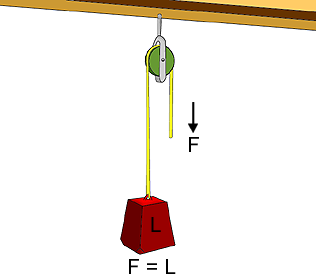
Let's make a fixed pulley. Connect a pulley with string to a metal hanger with duct tape and string. Make sure that the pulley is securely attached to the hanger. Hang the metal hanger over the back of a chair.
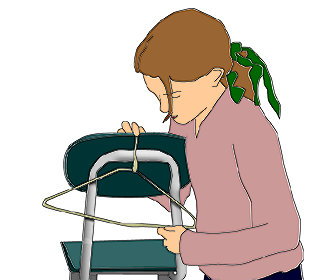
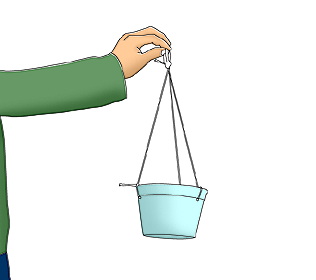
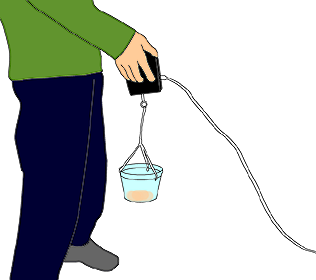
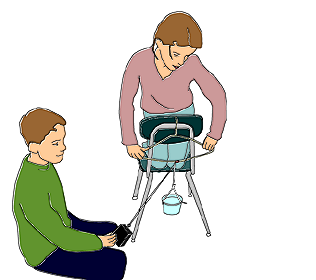
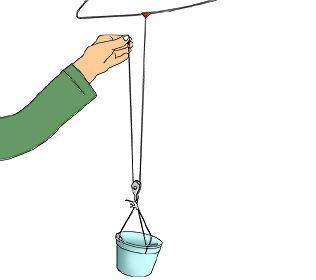
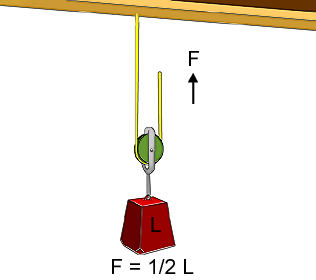
To make a moveable pulley, tie 40 cm of string directly to the hanger and secure it with duct tape. Hang the metal hanger over the back of a chair. Run the string around the pulley and attach the container holding the pennies to the pulley with a paper clip.
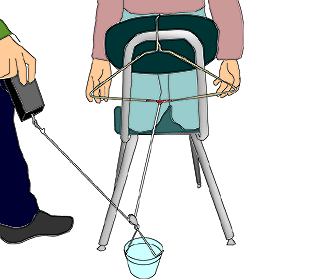
 |  |  |
Copyright 2005 The Concord Consortium, All rights reserved.